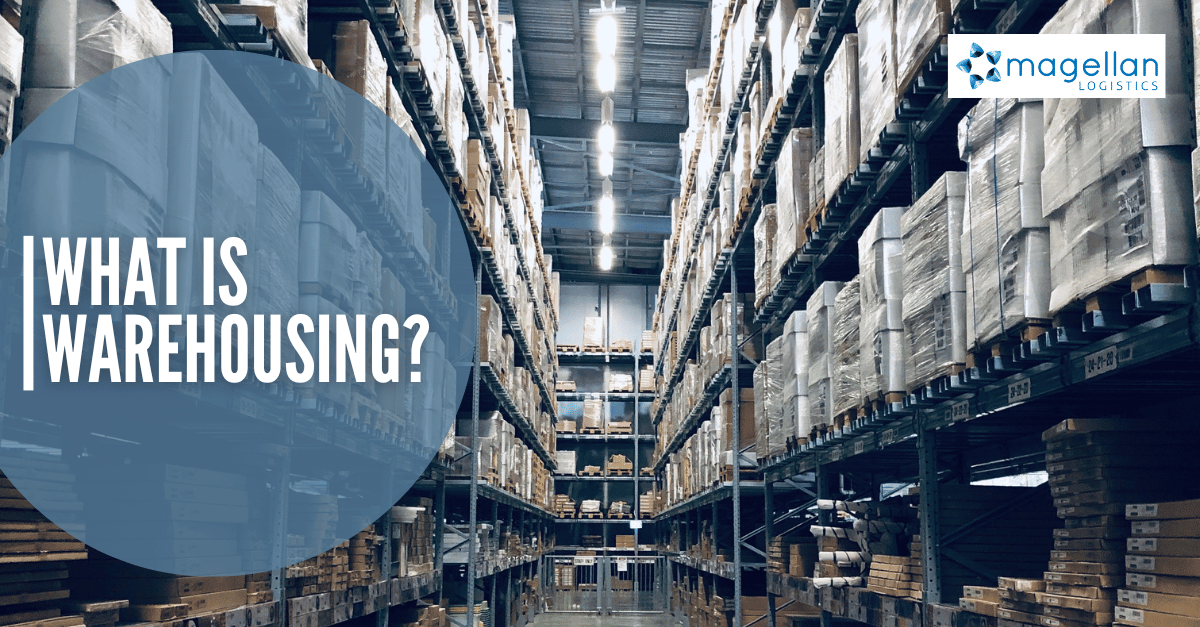Warehousing is the process of storing physical goods that are intended for sale or distribution. They act as the middleman in the process of goods production to eventual sale, allowing for the bulk storage of goods that would not be possible in a retail store.
Warehousing is a vital function for many businesses worldwide; e-commerce, retail and bulk goods suppliers are some of the main customers of warehousing companies. E-commerce businesses, in particular, have fuelled the rise of the warehousing industry over the last decade. With the cost of using a warehouse decreasing as the market becomes more competitive, many businesses are turning to third-party warehousing for storing their goods. The industry is predicted to reach $1.2 trillion by 2030.
Understanding the difference between a warehouse and a distribution centre
When it comes to logistics and supply chain management, it’s essential to understand the differences between a warehouse and a distribution centre. While the two terms may be used interchangeably, they have distinct functions and purposes. Let’s explore each one in more detail:
The difference between a warehouse and a distribution centre
A warehouse is a storage facility designed to hold goods until needed. Its primary function is to provide a safe and secure location for inventory management, storage, and control. A manufacturer, wholesaler, or retailer may own a warehouse.
A distribution centre, also known as a DC, is a specialised facility that serves as a hub for storing and distributing products to customers. A distribution centre is responsible for receiving, processing, and shipping orders. Its primary goal is to ensure that products are delivered to customers as quickly and efficiently as possible.
Functions
The primary function of a warehouse is to store goods until they are needed. This includes product receipt, storage, and movement within the warehouse. A warehouse may also provide order processing, labelling, and packaging services.
A distribution centre has a more complex set of functions than a warehouse. Its primary role is to receive products from suppliers and manufacturers and distribute them to customers. This includes receiving, sorting, processing orders and managing inventory and transportation.
Layouts
A warehouse is typically a large, open space designed for storage. It may have multiple aisles and shelving units for storing products. The warehouse layout is designed to maximise storage space and minimise the time and effort required to move products.
A distribution centre is designed to facilitate the movement of products from suppliers to customers as quickly and efficiently as possible. A distribution centre is designed with a more complex layout than a warehouse. It may include specialised areas for receiving, processing, and shipping orders and space for storing and managing inventory.
In summary, a warehouse is a storage facility designed to hold goods until needed, while a distribution centre is a specialised facility that serves as a hub for storing and distributing products to customers. While they share similarities, their functions, layouts, and purposes are distinct. Understanding the differences between a warehouse and a distribution centre is essential for effective logistics and supply chain management.
Why use a warehouse?
A warehouse provides many benefits that a smaller, more urbanised location cannot. They allow businesses to place bulk orders for products in quantities that cannot be stored at a retail location or are yet to be purchased by the end consumer in the case of e-commerce. Placing bulk orders makes it easier for businesses to negotiate prices with suppliers and thus increase their profit margins. They also allow companies to stock their inventory as demand fluctuates, e.g. during holidays. They also enable businesses to store stock in geographically strategic locations, reducing delivery times and shipping costs, sometimes even tax.
Four critical elements
There are four elements to warehousing, each performing a unique role that facilitates efficient stock management and streamlined packing of orders when goods are required for distribution.
Capacity management
It is essential to maximise the available space within a warehouse; thus, planning out the location of goods is vital. Warehouse slotting is the process of considering stock based on item velocity (the speed at which goods move in and out of the warehouse), dimensions, weight and product groupings and using these considerations to organise a warehouse to maximise efficiency.
Climate control
Temperature and humidity control are important when considering goods that require storage at certain temperatures or humidity levels. When warehousing, it is necessary to consider the goods intended for storage and the level of climate control they will require. Frozen/refrigerated goods will require freezers/fridges, and goods susceptible to moisture damage will need the warehouse to have extensive dehumidifying systems.
Staging area
The staging area is interim storage for goods entering or exiting the warehouse. A staging area has multiple uses, such as the location of goods receipt, storage for goods with an issue, or hold for picked goods waiting to be loaded.
Inventory management
A proper system to track which goods are stored and which have entered/exited a warehouse is crucial to warehouse management. An inventory management system tracks these parameters and provides data on the entire warehousing process.
The 6-step process
At its core, warehousing comes down to a simple, 6-step process:
- Receiving – The function of the physical receipt of stock and logging new stock into the inventory management system. It is essential to ensure proper planning of this step, as efficiency is built on accurate stock information.
- Put away – Upon notification of goods receipt, staff will identify and verify the goods and then deliver them to the correct storage location. Once in storage, put away staff will confirm that the process is complete in the inventory management system.
- Picking – One of the most crucial operations for customer satisfaction is the fast and accurate picking of orders. After pick-up, goods may be sent straight to the packing table or allocated to group or specific individual orders.
- Packing – The process of preparing the goods for shipment. Goods must be packed appropriately to be safe during every step of transit. Quality assessment is vital during this process.
- Dispatching – When goods leave the facility. Timing is vital. If an order is ready too early, it will clutter the staging area, whereas if an order is too late, loading may be delayed, leading to delayed delivery.
- Returns – A result of customer dissatisfaction, warehouses must be prepared to receive returns. All warehouses should have an allocated space for returned goods and organise the pick up of said goods. A system for extra expense accounting is also necessary to track the costs incurred for pick-up, repair and repacking.
Find out more about different types of warehousing and types of freight forwarding to enhance your understanding of logistics and supply chain management.
Magellan Logistics provides freight and logistics services to all industries, including sea freight, air freight, customs clearance and the all-important digital freight portal providing 24/7 visibility of all your shipments. Get in touch with one of our freight specialists on 1300 651 888.
Source:














